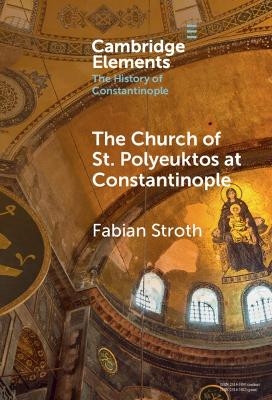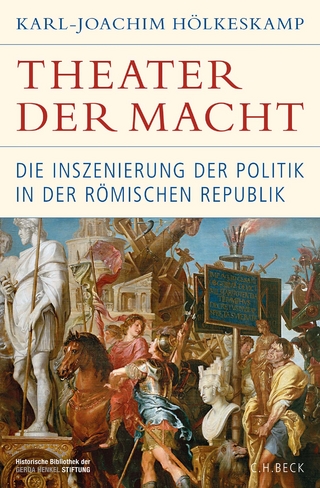
The Church of St. Polyeuktos at Constantinople
Seiten
2024
Cambridge University Press (Verlag)
978-1-009-51706-5 (ISBN)
Cambridge University Press (Verlag)
978-1-009-51706-5 (ISBN)
This Element discusses the Early Byzantine Church of St. Polyeuktos. One of the most magnificent, but also most peculiar architectural achievements in Byzantine Constantinople.
The Church of St. Polyeuktos is one of the most magnificent, but also most peculiar architectural achievements in Byzantine Constantinople. The accidental rediscovery of the building during construction work in Istanbul in the 1960s is legendary and considered one of the most sensational finds in Byzantine archaeology. Built by the aristocrat Lady Anicia Juliana, the reconstruction of the structure and the interpretation of its strange forms continue to challenge scholars today. The building gave rise to a whole series of archaeo-historical narratives, in which the City's byzantine protagonists and major monuments were woven into a coherent plot. This Element on the archaeology of St. Polyeuktos takes a closer look at these narratives and subject them to critical examination. In the end, the study of St. Polyeuktos will tell us as much about Byzantine architectural history in the second half of the twentieth century as about early Byzantine architecture itself.
The Church of St. Polyeuktos is one of the most magnificent, but also most peculiar architectural achievements in Byzantine Constantinople. The accidental rediscovery of the building during construction work in Istanbul in the 1960s is legendary and considered one of the most sensational finds in Byzantine archaeology. Built by the aristocrat Lady Anicia Juliana, the reconstruction of the structure and the interpretation of its strange forms continue to challenge scholars today. The building gave rise to a whole series of archaeo-historical narratives, in which the City's byzantine protagonists and major monuments were woven into a coherent plot. This Element on the archaeology of St. Polyeuktos takes a closer look at these narratives and subject them to critical examination. In the end, the study of St. Polyeuktos will tell us as much about Byzantine architectural history in the second half of the twentieth century as about early Byzantine architecture itself.
1. The Rediscovery; 2. The Foundress Anicia Juliana; 3. The Early Churches of Constantinople; 4. The Dating; 5. The Site; 6. The Epigrams; 7. The Architectural Sculpture; 8. The Reconstructions; 9. No Temple for Byzantium; 10. The Site in the Middle Ages; Bibliography.
| Erscheinungsdatum | 09.03.2024 |
|---|---|
| Reihe/Serie | Elements in the History of Constantinople |
| Zusatzinfo | Worked examples or Exercises |
| Verlagsort | Cambridge |
| Sprache | englisch |
| Themenwelt | Geschichte ► Allgemeine Geschichte ► Altertum / Antike |
| ISBN-10 | 1-009-51706-6 / 1009517066 |
| ISBN-13 | 978-1-009-51706-5 / 9781009517065 |
| Zustand | Neuware |
| Haben Sie eine Frage zum Produkt? |
Mehr entdecken
aus dem Bereich
aus dem Bereich
die Inszenierung der Politik in der römischen Republik
Buch | Hardcover (2023)
C.H.Beck (Verlag)
CHF 67,20
Buch | Hardcover (2024)
Klett-Cotta (Verlag)
CHF 69,95


